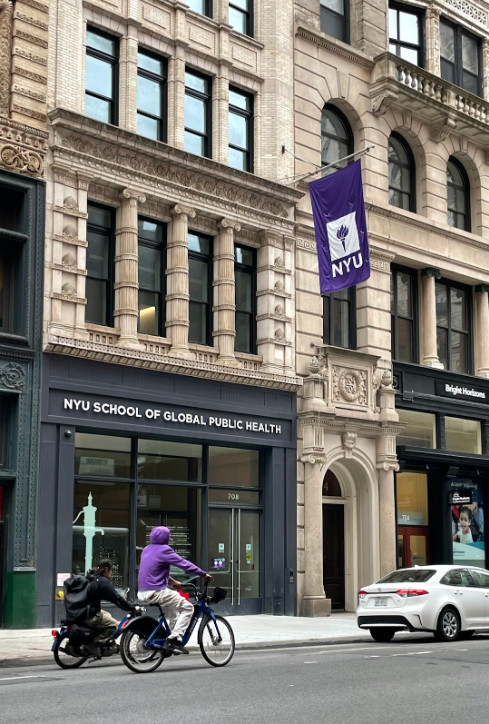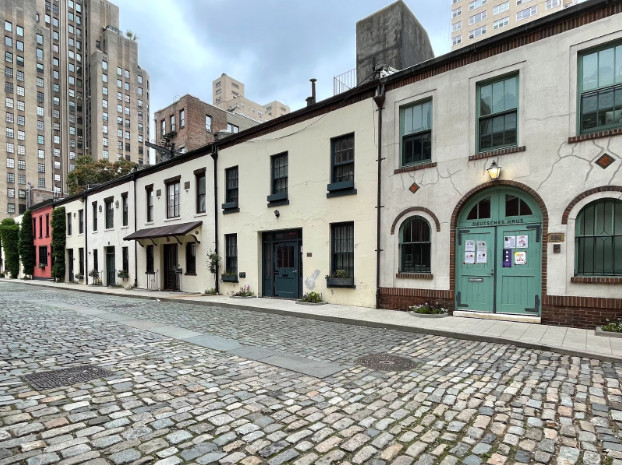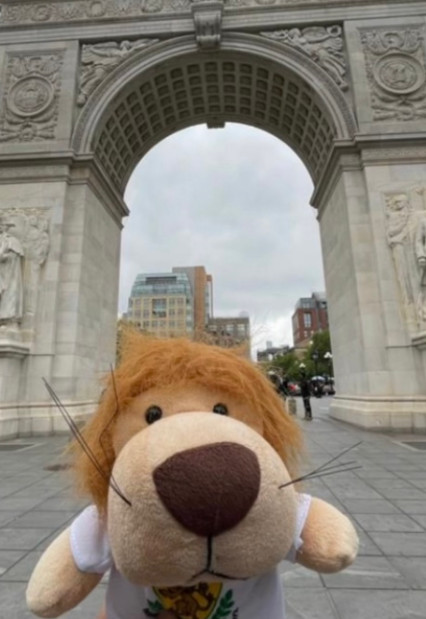“Who needs a campus when you live in New York City?”
Today we take the R Train all the way downtown to 8th street, and when we get off the subway we are immediately inundated with purple flags. Since New York University does not have a central campus, and is instead spread out across lower Manhattan, you may wonder how you know whether you are “on the NYU campus” or whether you are simply standing in front of a random office building. One tip is to look for a purple NYU flag affixed to the building. And in this part of the city, it seems that every other building has a purple flag hanging from it.
NYU’s 50,000+ students give this part of Manhattan a young, fun, and energetic feel to it. NYU is a “campus without walls,” and its students consider New York City to be their learning space and their playground. This includes Washington Square Park, which although is not officially an NYU property, serves as a sort of NYU Quad, where students relax and mill about between classes. The Uplands Lion particularly loved taking selfies under the park’s iconic arch.
My favorite NYU spot is a sort of hidden gem just near the park, called Washington Mews. It’s an unassuming street and really easy to walk past without even noticing it, but it’s worth a visit because it will take you back in time with its cobblestone street and quaint old-fashioned houses. It is one of the few privately owned streets in New York City, and it is owned by–you guessed it–NYU, who uses its charming houses as language schools to prepare its students to “study away.”
Here’s a fun fact about NYU’s Study Away Program. Of all the cities that are part of this massive study abroad program, only London’s living facilities cost more than NYU’s! And this brings our conversation to…money.
“Does going to college in NYC have to cost a fortune?”
To access less expensive alternatives to paying full tuition at some of the most expensive institutions in the world, some students try to obtain scholarships. My best tip for scholarships is to apply to a range of universities, including “safety” schools. Students are more likely to receive scholarship offers from their safety schools than from their reach schools, and the best part is that most US universities automatically consider students for merit-based scholarships without asking them to fill out a separate scholarship application.
Another way to access less expensive alternatives to paying full tuition at some of the most expensive institutions in the world is to simply avoid applying to one of the world’s most expensive schools. That may sound obvious, but many students have difficulty expanding their school lists to include a range of universities.
Less expensive state schools or city schools (or as we talked about earlier, community colleges) are often overlooked by international students. Today we walk about fifteen minutes past Washington Square Park to Baruch College, which is part of the City University of New York (CUNY) system. CUNY is the largest urban public university in the US. Of CUNY’s 25 colleges, Baruch is best known for its Business program, and it is less than a third of the cost of attending NYU (even less for New York residents). The Uplands Lion also found the Baruch admissions staff to be warm and welcoming as he looked for photo-ops around the urban campus.
What about you?
- Does having an urban campus without walls sound attractractive to you?
- What would the advantages or disadvantages of this type of learning and living environment be for you?
We have one more university to visit before we wrap up our tour, so let’s walk a few blocks from Baruch College to….
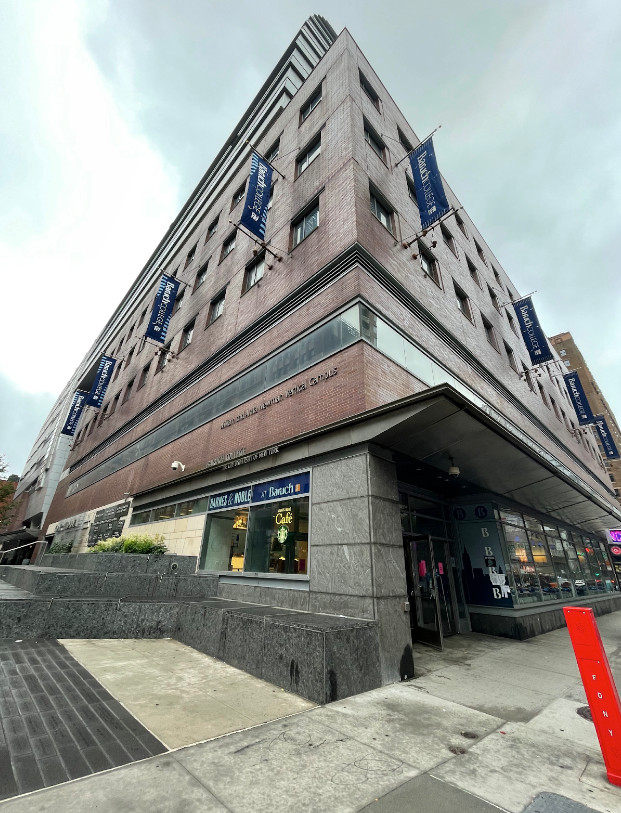
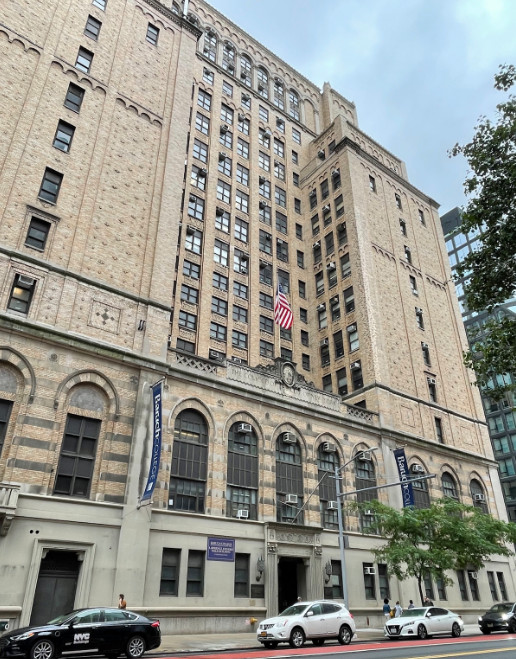
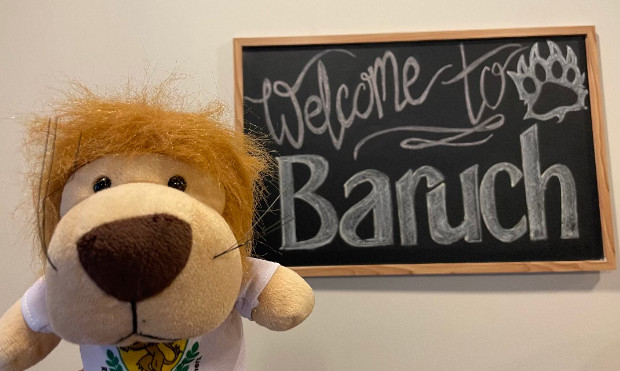
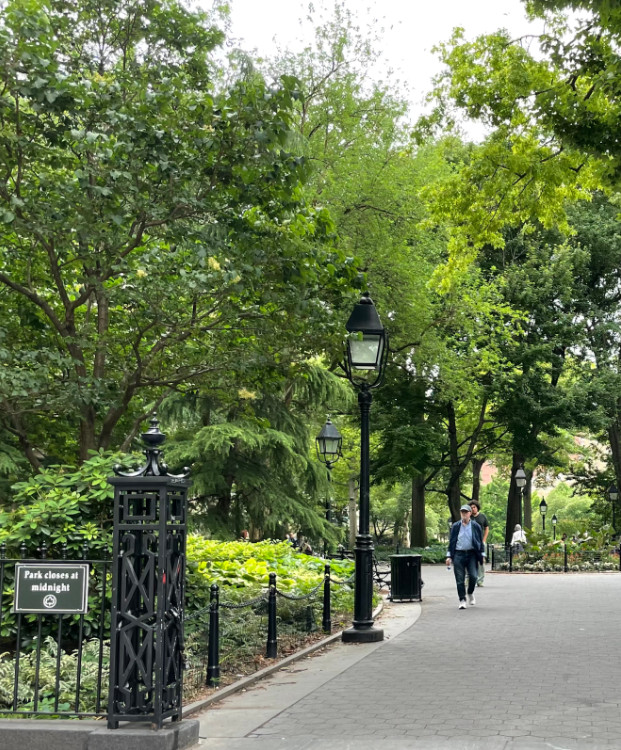
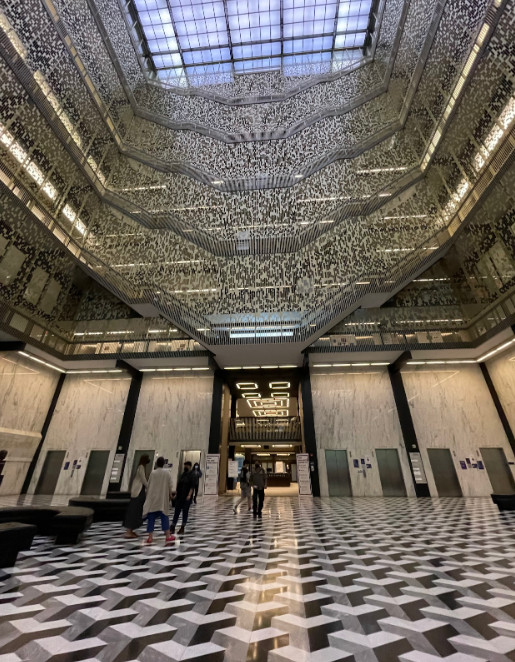
Fun Fact: This library holds 3.9 million physical books.
